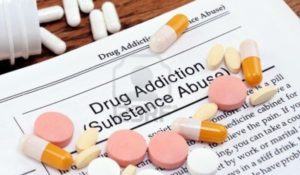 The country’s opioid epidemic is far-reaching in the burdens it places on so many facets of life here at home. And this includes areas that might not automatically come to mind or things that are easy to take for granted — for example, public restrooms.
The country’s opioid epidemic is far-reaching in the burdens it places on so many facets of life here at home. And this includes areas that might not automatically come to mind or things that are easy to take for granted — for example, public restrooms.
In the case of the homeless population struggling with substance use disorder, public restrooms can represent a relatively safe, relatively private place to use. However, this can result in overdoses within restaurants or retail businesses that are not equipped to handle them. At the very least, use of bathroom facilities in this way results in customer inconvenience and a drop in business; at the very worst, it can lead to fatalities traumatic for all involved.
One such scenario occurred last fall in the lobby restroom at Boston’s Massachusetts General Hospital. If security personnel hadn’t started carrying naloxone (a drug that reverses most opioid overdoses), the woman would’ve likely died.
Ryan Curran is a police and security operations manager at Massachusetts General. “It’s definitely relieving when you see someone breathing again when two, three minutes beforehand they looked lifeless,” he told California Healthline. “A couple of pumps of the nasal spray and they’re doing better. It’s pretty incredible.”
And that was not an isolated case: Curran said seven or eight others overdosed over the last year and a half that his team has been equipped with naloxone. They all survived.
However, most retail establishments do not have naloxone on hand, nor do they have staff trained to use it.
Problem of heroin use in public is not one easily addressed
Dr. Alex Walley is director of the Addiction Medicine Fellowship Program at Boston Medical Center. “It’s against federal and state law to provide a space where people can use [illegal drugs] knowingly, so that is a big deterrent from people talking about this problem,” he told California Healthline.
Walley says that an ideal restroom would include a biohazard box for used needles and blood-contaminated materials, as well as a supply of naloxone. It would be fitted with clean, stainless-steel surfaces and would be missing convenient hiding spaces for drugs or paraphernalia. To avoid an unconscious individual blocking entry, the door would open outward, and would be able to be unlocked from the outside. A medical professional (like an EMT or a nurse) would monitor the room.
But a facility that checks all those boxes is a rare thing indeed in this country. In the absence of that approach, town halls, libraries, and businesses in urban areas are increasingly shuttering their bathrooms to the public, or layering on obstacles to usage of the facilities, such as requiring a receipt, key, or code. Ultimately, though, by narrowing areas where individuals with those in the grip of addiction can use, public areas like parks or city streets can be the sites of drug use, overdoses, and discarded drug paraphernalia, including needles.
Canada claims some success with supervised injection approach
It may be illegal in this country to offer individuals with substance use disorders a space where they can use illicit drugs, but this is not the case in Canada. Insite is a supervised injection facility that offers both detox treatment and a safe space in which people can administer the drugs; it has been operating in Vancouver for 14 years, and some experts and associates attribute a decrease in overdose deaths and disease in the surrounding areas to the site. The model is being considered for use in other Canadian cities.
Safe-zone idea is floated in one U.S. county
The U.S. does not have anything like Insite currently in use, but the idea is at least being considered in Washington state. A task force has recommended clinics where drug users can administer the substances in a safe environment, without the risk of arrest, and with medical personnel nearby. Whether it will get beyond the idea phase is limited to only speculation at this point, but Dr. Jeff Duchin, King County’s health officer, is in favor of “safe consumption sites” or “community health engagement locations.”
Duchin explained to NPR in an interview that the sites would not provide drugs, but rather, would be staffed with healthcare providers that would provide clean injection equipment to minimize the spread of disease. And ultimately, he stated that “the goal is really access to treatment” and to help the people get off of heroin entirely. “We want people getting in long-term treatment,” he said. “And this is just one doorway that we can use to get people into treatment.”
He stressed that in no way would the safe consumption site idea that his office proposes make illicit drug use legal. Calling that a “misperception,” he stated, “We are going to give people with substance abuse disorders a safe, medically supervised place where they can use their drugs and not fear being arrested, beaten up or attacked.”
This blog post is provided for educational purposes only and is not offered as, and should not be relied on as, legal advice. Any individual or entity reading this information should consult an attorney for their particular situation. For more information/questions regarding any legal matters, please email [email protected] or call 310.203.2800.